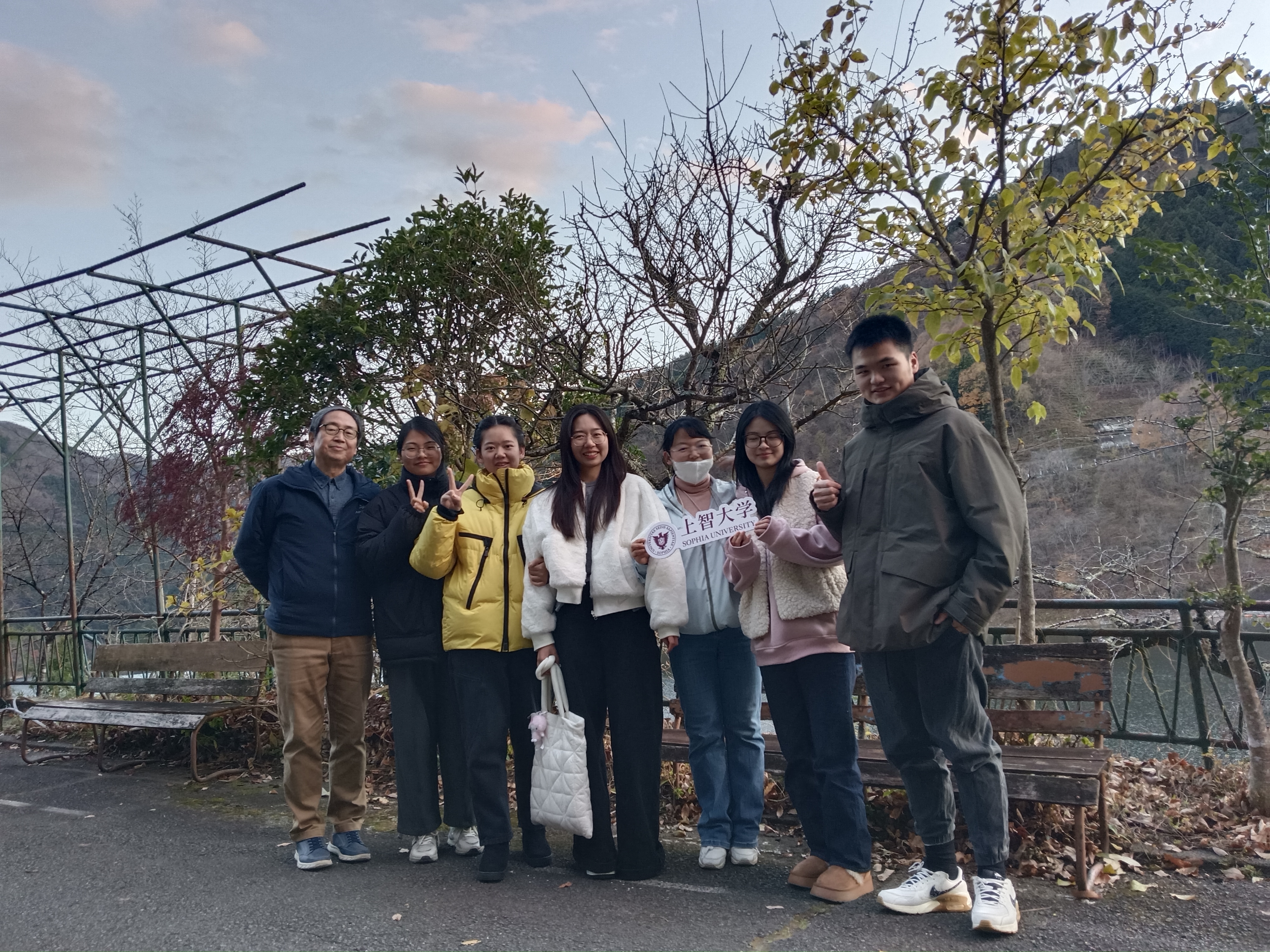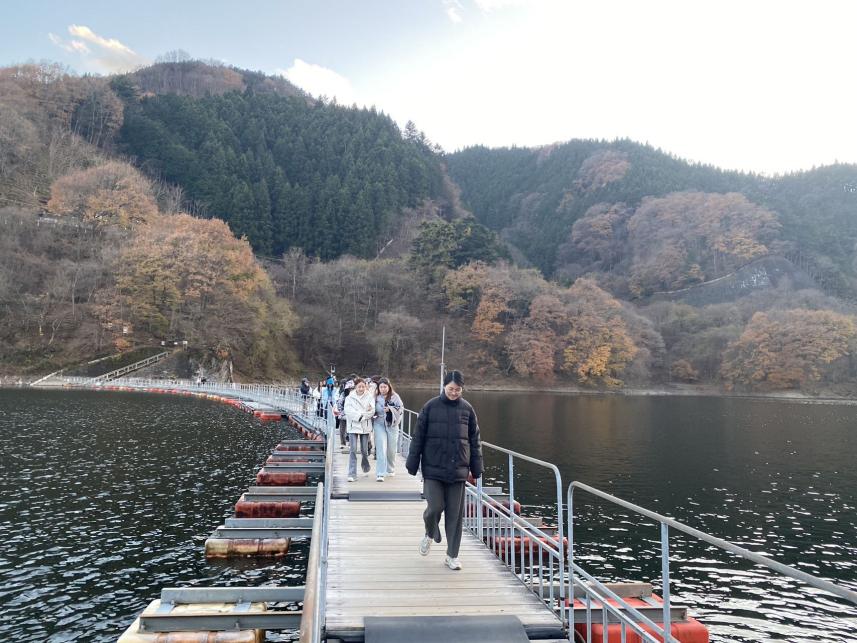On December 10, 2024, Jiangxi University of Finance and Economics, together with Sophia University and the Education University of Hong Kong, formed a study group to visit the Tama River basin in Japan for a field study focused on local waterway management. This study aims to draw lessons from Japan's approaches to river protection and reuse by closely examining the Tama River basin. Furthermore, it seeks to investigate the significance of waterways in rural revitalization and to foster international academic and cultural exchanges among the faculty and students from the three universities.

Students and their teacher from Jiangxi University of Finance and Economics are with Professor Huang Guangwei from Sophia University
The Tama River is one of Tokyo, Japan's primary rivers, playing a crucial role in the city's development. Historically, the Tama River basin has encountered flooding challenges, particularly during typhoon season, and has experienced shifts in its course that have affected land development and usage. In the 1960s, there was a significant rise in industrial and residential activity along the riverbanks, which resulted in pollution and a decline in the ecological environment. In response to these issues, the local government embarked on extensive environmental remediation efforts in the 1970s, which have since proven to be quite effective. The management of the Tama River provides valuable insights into Japan's practices in river management and rural revitalization.

The Tama River
Under the guidance of Professor Huang Guangwei, Dean of the Graduate School of Earth Environmental Studies at Sophia University in Japan, and Professor Cheng Yalin from the College of Sociology and Humanities at Jiangxi University of Finance and Economics, students from three universities engaged in comprehensive studies of the Tama River basin. Their research explored various topics, including Japanese technologies, policies, and tangible achievements in water quality improvement and management.

Students and their teacher from Jiangxi University of Finance and Economics are with Professor Huang Guangwei from Sophia University
During the visit, Professor Huang Guangwei presented an overview of the historical development and water pollution challenges in the Tama River basin dating back to the 1960s. He used this context as a foundation to explain essential concepts related to water resource protection and reuse, including water quality testing, strategies for controlling eutrophication, and the significance of regional environmental cooperation.
Subsequently, teachers and students from three schools explored various local artificial facilities, such as dams and bridges, as well as natural landscapes, including rivers and vegetation. This firsthand experience allowed them to appreciate the accomplishments in water management within the Tama River basin. Furthermore, they engaged in discussions regarding the legislation, policy support, and funding initiatives, as well as the "tree planting + afforestation" programs that Japan has implemented since the 1960s to manage its water resources effectively.

Teachers and students from three schools in China and Japan visited the mugiyama Floating Bridge
This joint study program served as an enriching platform for academic and cultural exchange among teachers and students from the three participating schools. It provided a unique opportunity to gain firsthand insights into Japan's achievements in river management. The experience inspired students and guided them in their future research on environmental governance and rural development, enhancing their understanding and application of the concept of "Lucid waters and lush mountains are invaluable assets" in their forthcoming endeavours. Furthermore, the program strengthened the connections and collaboration among participants from all three schools. We eagerly anticipate expanding our international exchanges and partnerships in the future to support our school's objectives of "internationalization" and "green development."

